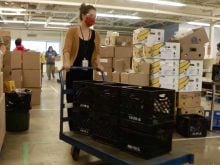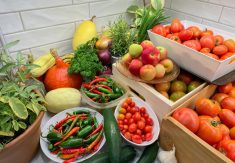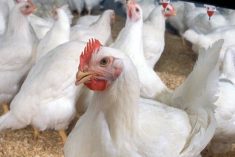A lack of appreciation for Indigenous communities’ knowledge, goals and approaches to food production is hampering business development, experts told the Manitoba Protein Summit.
“We don’t want pilot projects. We want equitable access to capital. We want equitable access to programs, and we want programs that aren’t broken,” said Bruce Hardy, president of the Myera Group.
Hardy spoke alongside Indigenous business leaders and food and beverage experts in a panel on Indigenous-led protein innovation and perspective on the second day of the summit on February 23.
Read Also

Manitoba Ag Days 2026 coming up fast
Canada’s largest indoor farm show, Manitoba Ag Days, returns to Brandon’s Keystone Centre Jan. 20-22, 2026. Here’s what to expect this year.
There’s not a lot of acceptance on the capital or funding side of Agriculture and Agri-Food Canada for Indigenous ways of food production, Hardy said. In part, this is because in the federal government food and medicine are two different departments, and rarely the twain shall meet.
“We don’t see the difference between food as medicine and medicine as food,” Hardy said.
Food and medical innovation may also require respecting Indigenous knowledge and protocols around that knowledge, said Hardy.
Hardy said he’s worked with legal experts to introduce the concept of Indigenous knowledge, which may be passed down through knowledge keepers over centuries. Knowledge keepers should have authority over that knowledge, even when sharing it with researchers.
A commodified approach to food may also not work for remote communities, said Hardy.
That’s why governments and economic-development folks can’t go in with a one-size-fits-all approach and assumed measures of success, said Michael Mikulak, executive director of Food and Beverage Manitoba.
“You need to respect their needs and understand,” Mikulak said.
Food business success may mean producing more food in community rather than exporting or getting products into stores, he said.
Governments tend to like big, “blingy things,” said Richard Tuck, CEO of Wakopa Financial. They need to step away from that towards a long-term approach, such as assisting Indigenous communities to reconnect with food.
Tuck also works with the Social Entrepreneurship Enclave (SEE).
SEE researchers heard over and over that Indigenous communities have lost their connection to food, Tuck said. Communities suggested community gardens and community kitchens where people can reconnect with food and get culturally appropriate training.
“If we had started with community gardens and kitchens, you know, five years ago, we would be having a very different conversation here,” he said.
It’s also just plain tough to start a new food business.
For instance, access to abattoirs is an issue — especially for those in remote communities.
“How I see government helping is reducing those barriers,” he said.
Tuck said he’s working with a First Nation that wants to raise bison but has found it tough to enter the protein industry on a small scale.
He asked why Manitoba hasn’t taken a similar approach to B.C., which has licence categories for regional sale of meat slaughtered on farm.
Direct Farm Manitoba, which represents direct-marketing farmers and farmers’ markets, has issued similar calls, saying regulated on-farm slaughter would give livestock producers more options for market entry.
Like the rest of the food and beverage industry, Indigenous food entrepreneurs struggle to find suitable employees, says a September 2021 research report on barriers to food entrepreneurship, co-funded by SEE.
This may be made worse by added requirements tied to band funding, such as only hiring Indigenous workers, the report says.
Getting products to market is very costly, said Alfred Lea, founder of Native Canadian Chip Corporation, maker of Tomahawk Chips. He said Indigenous businesses often don’t last long because they don’t have the capital to go beyond their communities.
He reiterated the need for a trained workforce along with more trade show opportunities to bring his and other Indigenous entrepreneurs’ products to the mainstream.
These business owners also need access to quality coaching, said Tuck, “to not waste their time.”
Instead, governments seem to think Indigenous business owners should be happy with whatever they get, Tuck said. They end up “seated at the kiddie table” with mentors who have no experience or no success, he said.
Other barriers include the cost of food on reserves, which makes it difficult for fresh food to compete with cheaper, packaged options, the research report says. There’s a lack of sales infrastructure — e.g. ability to establish a storefront; lack of access to farmland; and confusion over business registration and tax regulations.
















